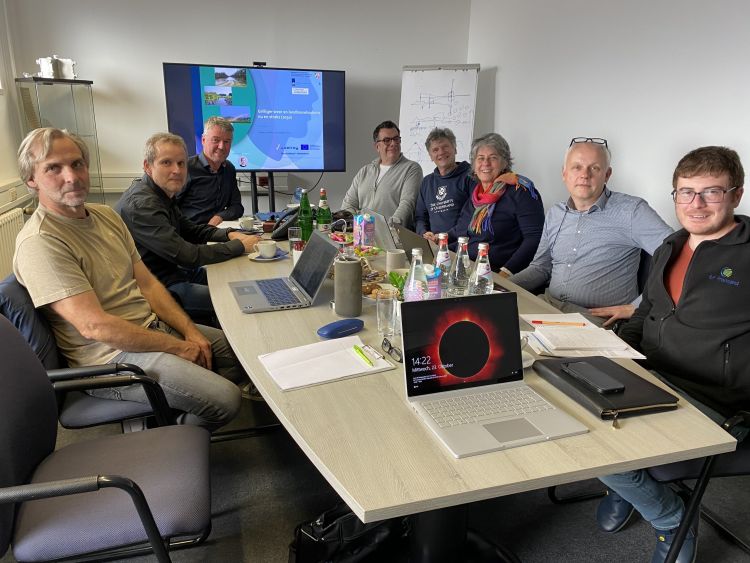SHAPE Soil Management System: Software Development, DSS and Data Infrastructure
Work Package V

The aim of the WP is to establish a complete, end-to-end data processing chain, from data collection and storage to analysis and presentation (dashboards) of the data and results. The products of the individual work packages will have independent databases with identical data output formats to ensure integration into the overall system. The subcomponents to be developed will have open software interfaces (APIs) that enable interoperability with other systems. Wherever possible, the data will be published as open data. Data will be collected via internet-enabled measurement systems and input masks for the manual documentation of management measures (sowing, fertilization, irrigation, etc.). Voice input will also be enabled here. External data sources with a spatial reference will also be integrated. This includes both time-varying weather and remote sensing data, as well as static information such as topographical or soil maps and land registers. The latter will be used to create a field register.
Using machine learning, relationships between current and historical soil measurements recorded in the SHAPE field laboratory and crop management decisions are identified from generated observations. This information is used to develop model-based target values for a desired soil condition and to derive concrete recommendations for action for agriculture that are currently possible. These recommendations will be further adapted using the insights gained in WP 4 and then converted into initial rules. By incorporating expert knowledge, interacting with users, and continuously adding further “verified” rules from WP 4, the system will be continuously enhanced and trained over the course of its application. The data stream branches out depending on the application scenario:
Private sector:
Additional sub-developments for the soil management system based on the IoT platform Eijkelkamp:
-customer-specific data storage and analysis Derivation of concrete target values and recommendations for action as a service
-Mathematical validation models and processes to assess data plausibility
-Labelling of validated data
-Establishment of a user administration system with roles and rights that enables the collection and sharing of data
-User-specific assignment of parameters and target values
-Integration of existing measurement technologies and resulting data streams
-The development of SDKs to connect various soil measuring devices and to define application and business cases.
-Establishment of a data marketplace with data usage agreements and user-specific access
Public:
Development of an open and freely usable soil health information platform to support the public sector’s commitments regarding transparency, participation, data openness, and disclosure.
Sub-developments:
Relational open-source database management system with geodata extension (PostgreSQL + PostGIS) for managing geospatial-temporal data
Development of a geographical information system “Soil Health” based on QGIS for general information, training purposes and to raise awareness of the topic.
Consideration of the EU directive “INSPIRE – Infrastructure for Spatial Information in the European Community” for a pan-European spatial data infrastructure for the purposes of a community environmental policy. Integration of relevant data streams (measuring instruments, external data, etc.)